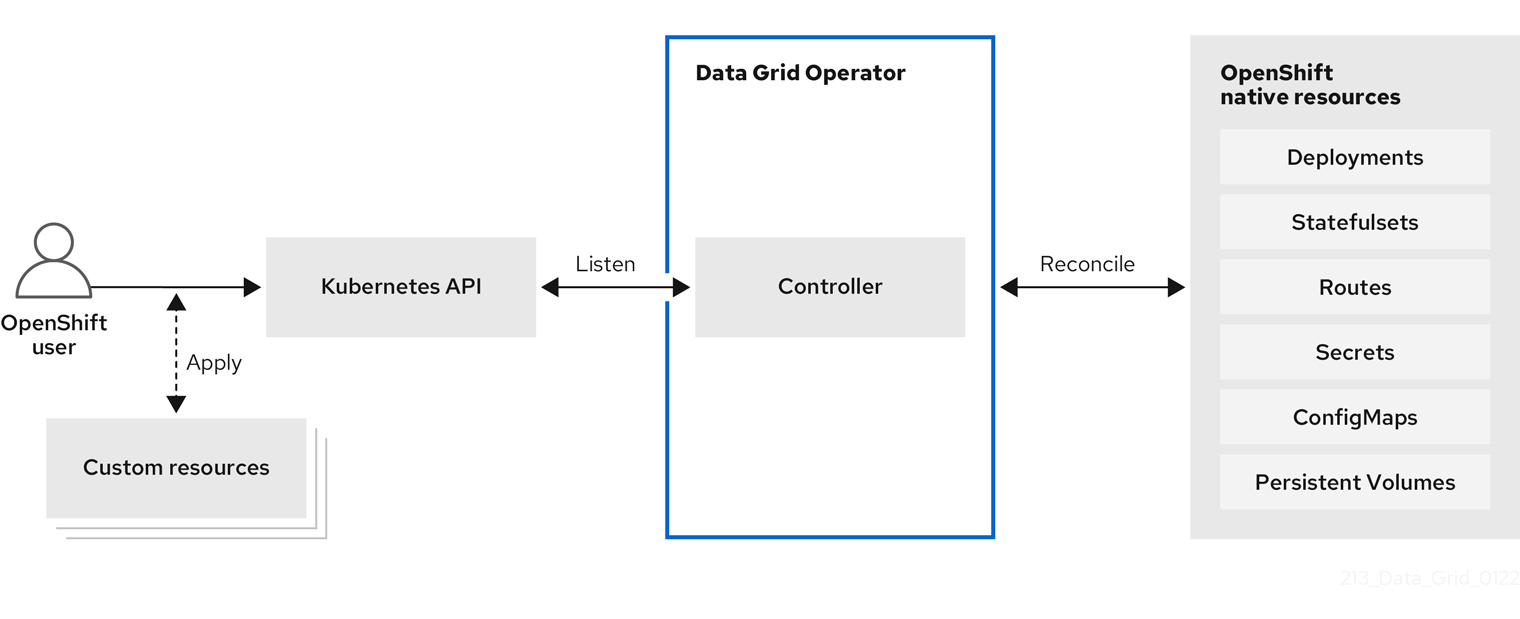Chapter 1. Data Grid Operator
Data Grid Operator provides operational intelligence and reduces management complexity for deploying Data Grid on Kubernetes and Red Hat OpenShift.
1.1. Data Grid Operator deployments
When you install Data Grid Operator, it extends the Kubernetes API with Custom Resource Definitions (CRDs) for deploying and managing Data Grid clusters on Red Hat OpenShift.
To interact with Data Grid Operator, OpenShift users apply Custom Resources (CRs) through the OpenShift Web Console or oc client. Data Grid Operator listens for Infinispan CRs and automatically provisions native resources, such as StatefulSets and Secrets, that your Data Grid deployment requires. Data Grid Operator also configures Data Grid services according to the specifications in Infinispan CRs, including the number of pods for the cluster and backup locations for cross-site replication.
Figure 1.1. Custom resources

1.2. Cluster management
A single Data Grid Operator installation can manage multiple clusters with different Data Grid versions in separate namespaces. Each time a user applies CRs to modify the deployment, Data Grid Operator applies the changes globally to all Data Grid clusters.
Figure 1.2. Operator-managed clusters

1.3. Resource reconciliation
Data Grid Operator reconciles custom resources such as the Cache CR with resources on your Data Grid cluster.
Bidirectional reconciliation synchronizes your CRs with changes that you make to Data Grid resources through the Data Grid Console, command line interface (CLI), or other client application and vice versa. For example if you create a cache through the Data Grid Console then Data Grid Operator adds a declarative Kubernetes representation.
To perform reconciliation Data Grid Operator creates a listener pod for each Data Grid cluster that detects modifications for Infinispan resources.
Notes about reconciliation
-
When you create a cache through the Data Grid Console, CLI, or other client application, Data Grid Operator creates a corresponding
CacheCR with a unique name that conforms to the Kubernetes naming policy. -
Declarative Kubernetes representations of Data Grid resources that Data Grid Operator creates with the
listenerpod are linked toInfinispanCRs.
DeletingInfinispanCRs removes any associated resource declarations.

